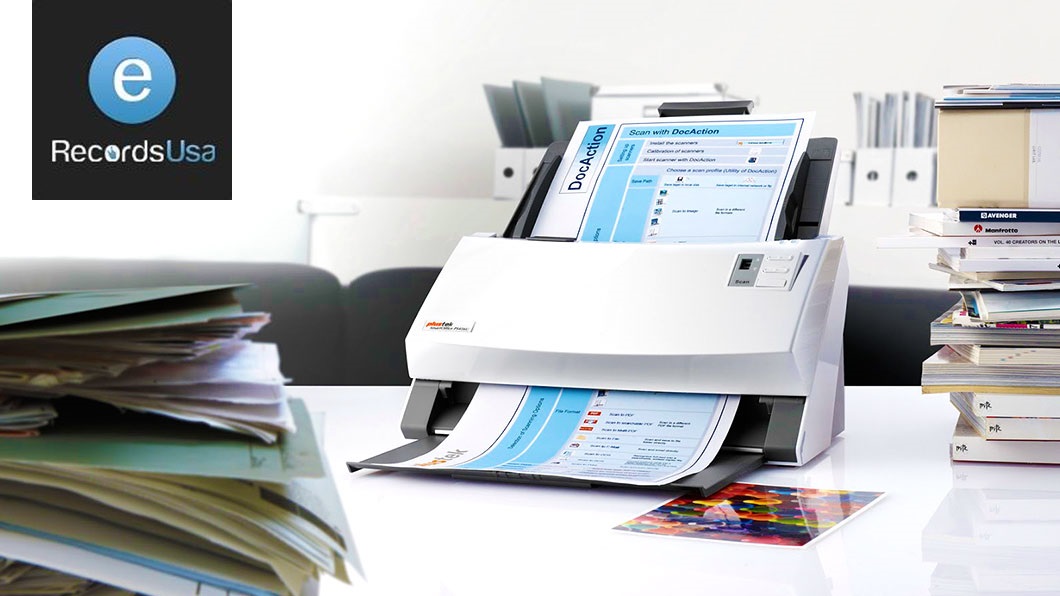Why is Digitizing Academic Records Essential for Universities?
In today’s digital age, universities face a pressing challenge: how to effectively manage the rising volume of student records while enhancing operational efficiency? The solution lies in documents digitization.
Traditional paper-based systems are inefficient and susceptible to errors, misplacement, and security vulnerabilities.
By investing in documents scanning & management, universities can modernize their operations, save time, and enhance the student and faculty experience. In this article, we will address the following key questions that universities often face when considering digitization:
- What are the current challenges of managing paper-based academic records?
- What specific benefits can digitization bring to universities?
- How does digital record management improve the experience for students and staff?
- How can universities ensure data security and regulatory compliance through digitization?
By answering these questions, we will demonstrate how digitization is no longer an option but has become necessary for universities looking to keep pace with modern demands.
Did you know that A typical school/University will use an average of 2,000 sheets daily?
It means that during a full school year of 160 days, a school will chew through over 320,000 sheets of paper. With roughly 100,000 schools in the US, this means that all together schools are consuming as much as 32 billion sheets of paper per year.
Digitizing records not only streamlines academic operations but also positions universities as leaders in sustainability efforts. This transition aligns with broader goals to reduce the educational sector’s carbon footprint and promote eco-friendly practices.
What Are the Challenges of Managing Paper-Based Academic Records?
For many universities, managing academic records in a traditional paper-based system comes with several inefficiencies and risks.
The most common challenges include:
- Storage Limitations: Universities have thousands of student records, from admissions files to alumni information. Storing this sheer volume of paperwork can take up valuable space on campus, leading to overcrowded filing cabinets and document storage rooms.
- Time-Consuming Access: Retrieving and sorting through physical records is slow and labor-intensive. This wastes valuable time that staff could use on more critical academic or administrative tasks.
- Security Risks: Paper records are vulnerable to damage (from fire, water, or wear and tear) and misplacement. In the worst cases, sensitive student data could be lost or accessed by unauthorized individuals.
- Environmental Concerns: The continuous use of paper contributes to deforestation and other environmental issues. As universities move toward sustainability, the excessive use of paper becomes a roadblock to these goals.
- Limited Accessibility: Access to paper records is restricted to physical locations. This can delay responses to student requests, particularly when staff need to retrieve documents from different campus departments or archives.
These issues highlight the growing need for universities to explore digital solutions to improve efficiency, security, and student records management.
How Academic Institutions Benefit from Digital Student Records?
Transitioning to digital academic records provides multiple benefits that far surpass the limitations of paper-based records. Some of the most impactful advantages include:
- Digital technology is revolutionizing academic operations: Academic institutions are increasingly adopting digital technologies to streamline their operations, similar to trends seen in the business world
- Complete document management systems: A robust digital record-keeping system is essential for data security and efficient storage in the global education market
- Streamlined transcript dissemination: Digitization simplifies the process of distributing transcripts, making it faster and more efficient
- Enhanced security and protection: Digital student records offer superior security features compared to traditional paper records
- Benefits for legacy records: Older records also gain from digitization, ensuring they are preserved and easily accessible
- Long-term benefits: Although the transition to digital records may involve initial challenges, the long-term benefits include improved efficiency and cost savings
- Support for Alumni Engagement and Networking: Digital records aren’t just for current students. Alumni relations offices benefit from digitized alumni data, making it easier to engage former students for donations, mentorship programs, and networking opportunities. This fosters long-term relationships with graduates.
Well, the benefits of digitizing academic records allow universities to operate more efficiently, cut costs, and provide better services to students and staff.
How Does Digitizing Academic Records Improve the Student & Faculty Experience?
While digitization improves operational efficiency and data security, it also offers distinct benefits that directly improve the experiences of students and faculty in ways that go beyond basic administrative processes. Here are some of the unique impacts:
- Personalized Academic Support: With easily accessible digital records, faculty members can better track and analyze individual student performance and academic history. This allows advisors and educators to offer more personalized academic guidance, helping students stay on track with their educational goals. This level of tailored support is difficult to achieve with cumbersome paper based records.
- Enhanced Student Autonomy: Digital records empower students to take greater control over their academic journeys. Whether they need to access their grades, enrollment information, or transfer documents, digitized systems allow students to retrieve their data without waiting for administrative approval. This self-service model improves overall student satisfaction and fosters independence.
- Real-Time Feedback and Progress Tracking: Faculty can use digital platforms to give students real-time feedback on assignments, attendance, and overall progress. This enables students to make timely adjustments to their study habits. It eventually improves academic outcomes. Paper-based systems often delay this feedback loop, hindering progress.
- Enhanced Academic Planning for Students: With access to digitized records, students can more easily track their academic progress in real-time, helping them make informed decisions about course registration, graduation timelines, and prerequisite fulfillment. Digital systems also integrate academic advising tools, making it easier for students to plan their education pathways efficiently.
- Fostering Inclusive Education: Digital academic records provide better support for students with disabilities or special requirements. By making academic information readily available in accessible formats, universities can ensure that students with diverse needs have equal access to their educational materials, assignments, and records, enhancing inclusivity within the academic environment.
These benefits go beyond the logistical conveniences, contributing to a more dynamic and supportive academic environment for students and faculty.
How Can Universities Ensure Data Security and Compliance with Digital Records?
Digitizing academic records comes with the responsibility of ensuring that sensitive information is well-protected and compliant with relevant data privacy laws. Universities handle a sheer volume of confidential data, including student academic histories, personal information, and faculty records, making security a top priority. Here’s how digitization can enhance data security and compliance:
- Encryption and Access Controls: Digital record systems use encryption to protect data in transit and at rest. This ensures that sensitive information, such as student records and personal identification details, is unreadable to unauthorized individuals. Additionally, access controls allow universities to limit data access to authorized personnel only, reducing the risk of internal breaches.
- Compliance with FERPA and Other Regulations: Universities are required to adhere to laws such as the Family Educational Rights and Privacy Act (FERPA), which governs the access and protection of student records. Digital record systems are designed to comply with these regulations, offering features like audit trails, which track who accesses or modifies records, ensuring accountability and legal compliance.
- Data Backup and Recovery: Digital systems provide automated backups, ensuring that data is not lost due to system failures, cyberattacks, or natural disasters. This capability is a significant advantage over paper records, which can be easily damaged or destroyed.
- User Authentication and Role-Based Access: By implementing role-based access, universities can control who can view, edit, or manage specific types of records. This ensures that sensitive data is accessible only to those who need it for their work, reducing the risk of exposure.
- Cybersecurity Protocols: Digital records can be protected by multi-layered cybersecurity measures, including firewalls, intrusion detection systems, and regular vulnerability assessments. Universities that invest in robust cybersecurity frameworks are far better equipped to prevent data breaches and protect student and faculty information.
The importance of these measures is underscored by recent statistics: over 650,000 education records were exposed in the past 60 days alone due to data breaches in the education sector
This highlights the urgent need for universities to adopt comprehensive cybersecurity protocols. Implementing strong data encryption, multi-factor authentication, and continuous monitoring can drastically reduce the risk of unauthorized access and ensure compliance with regulations such as FERPA.
By investing in robust cybersecurity, universities safeguard sensitive academic information and build trust with students and faculty, securing their reputation in an increasingly digital world.
Get Your University Academic Records Digitized from eRecordsUSA
Now that you understand the critical importance of digitizing academic records, the next step is to take action. By hiring a San Francisco document scanning company, your university can improve operational efficiency, enhance security, and provide a better experience for students and staff alike.
Don’t wait to make the shift—start your digital transformation today. Here’s how:
- Evaluate Your Current System: Assess the challenges your university faces with paper-based records. Identify where digitization can make the most immediate impact.
- Consult with Experts: Partner with digital transformation specialists who can tailor a solution to meet your university’s needs. Whether cloud storage, secure access, or integrating AI, a customized approach ensures the best results.
- Implement a Secure and Scalable Solution: Choose a records management platform that’s secure, scalable, and future-proof. Make sure it complies with legal requirements like FERPA and offers long-term support.
- Train Your Staff: Transitioning to digital requires thorough training for staff and faculty to ensure a smooth adoption and effective use of the new system.
Take the first step toward modernizing your academic record management—reach out to a trusted document scanning service provider today!

















